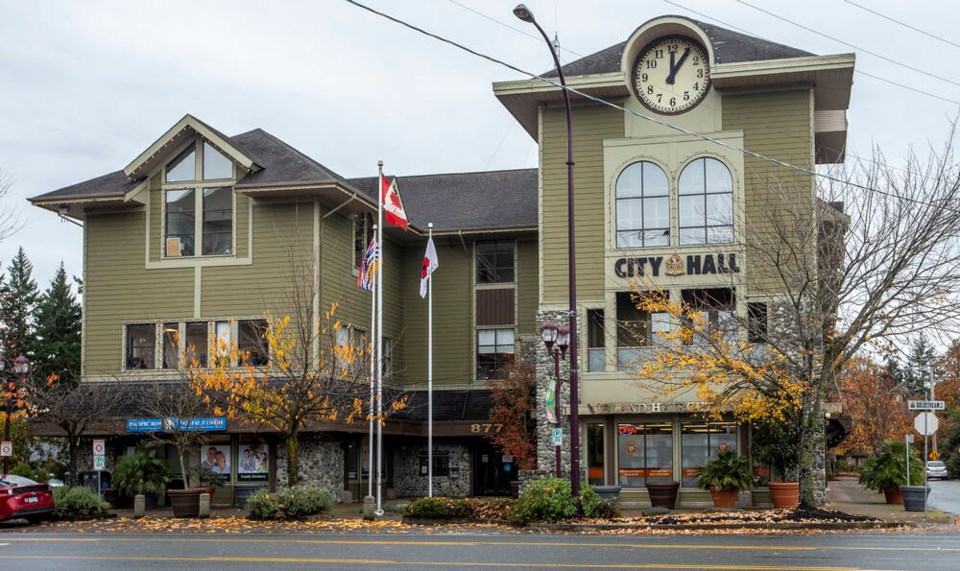A commentary by the vice-chair of Grumpy Taxpayer$ of Greater Victoria, a citizens advocacy group for municipal taxpayers.
When local politicians gather for coffee and a nickel falls on the floor — or so the story goes — heads bump together in the dizzying rush to pick it up.
That’s not always what happens in the capital region, though. After doling out community grants, a lack of checks and balances by past councils has led to countless lost nickels.
Here are three costly examples of poor governance practices. None inspire much confidence in the fiscal discipline of local government.
Langford taxpayers are taking a big hit after finding out the wonderful YMCA/YWCA-operated pool and fitness centre is in troubled waters.
The new council — all but one councillor are newbies — has learned the facility accumulated steep losses of $10 million.
Opened in 2016, the building is owned by Westhills Development, and the City of Langford and the YMCA agreed to lease the facility for 25 years.
Since 2020, Westhills even deferred YMCA/YWCA rent, which has been struggling to attract members during the pandemic, to the tune of $1.6 million.
The YMCA board has asked Langford to double the yearly subsidy to $1.9 million or risk it closing in April. That represents a tax increase of 2.5 per cent, substantial in tough times.
Most troubling is a staff report finding that no biannual operating reports on the YMCA finances were ever presented to staff or council since the centre opened.
Clearly, the breakdown in governance rests with the last council, who must have known about serious financial issues. Residents now wonder if there are more legacy revelations to come.
The new Langford council faces some uncomfortable decisions, which may include buying the facility. The $16.5 million from the provincial Growing Communities Fund might come in handy.
Meanwhile, Sidney and North Saanich taxpayers are still reeling after large cheques kept going out the door for the highly regarded Mary Winspear Centre with inadequate checks and balances.
The Saanich Peninsula Memorial Park Society runs the centre and the Mary Winspear Foundation fundraises. Both had their charitable status revoked by the sa国际传媒 Revenue Agency in 2021 and 2022.
Both organizations lost their status after failing to file returns for the 2019, 2020, and 2021 tax years. It’s astonishing that it went unnoticed by two boards, plus two councils and their staff.
Sidney’s contribution toward the facility was just over $365,000 in 2022 — or three per cent of the municipality’s total property tax revenue. The District of North Saanich contributed $210,000 last year, 45 per cent of the community grants budget.
Fortunately, even though the centre lost the ability to issue tax slips to donors, its operations were otherwise unaffected. Audits have been completed and they hope to regain their charitable status this year.
Sidney council is taking steps to make sure this doesn’t happen again. New formalized funding agreements with the municipalities are being developed, which will likely include requirements for annual financial reports to the municipalities.
Lastly, Victoria taxpayers started writing annual cheques of $200,000 in 2022 to two local First Nations as part of a five-year annual reconciliation grant.
The pilot project was controversial because of the amount, and the absence of any reporting requirement. Every other city grant recipient must report annually on the expenditure.
Critics argue that a grant to a specific organization, such as the Victoria Native Friendship Centre, would have included a financial accounting and kept taxpayers happy. City taxpayers would have also benefited more directly.
Council amended the original proposal in response to the backlash from the public, who felt the initiative was outside of council’s purview. Of nearly 50 items put to the public for comment, the reconciliation grant received one of the lowest rankings of support, with 52.8 per cent strongly disagreeing.
Community grants have always been one of the more controversial expenditures for councils. Residents believe community grants often pander to a politician’s supporters.
Central Saanich says it takes a much more transparent approach that it says is “more balanced.”
Community grants are capped at $1,000 — only seven were granted this year — and must focus on sustainability, emergency preparedness or accessibility. Eight service contracts worth $97,000 were also approved for groups like the Boys and Girls Club and Peninsula Streams.
Nowadays, financially stressed taxpayers are asking more pointed questions.
How does council exercise fiduciary duty with major grant recipients? What measurable benefits do the taxpayers receive as a result of the grant? Does the municipality have councillors or staff who liaise with the non-profit boards? What is their role? Is there a funding agreement in place and what accountabilities are built into it? Why are local governments handing out taxpayer money? To what end? What criteria are the municipalities using to determine who gets a grant, and how do they determine how much?
Community grants consist of hard-earned tax dollars and must be better scrutinized by councils at all times, especially during troubled times.



